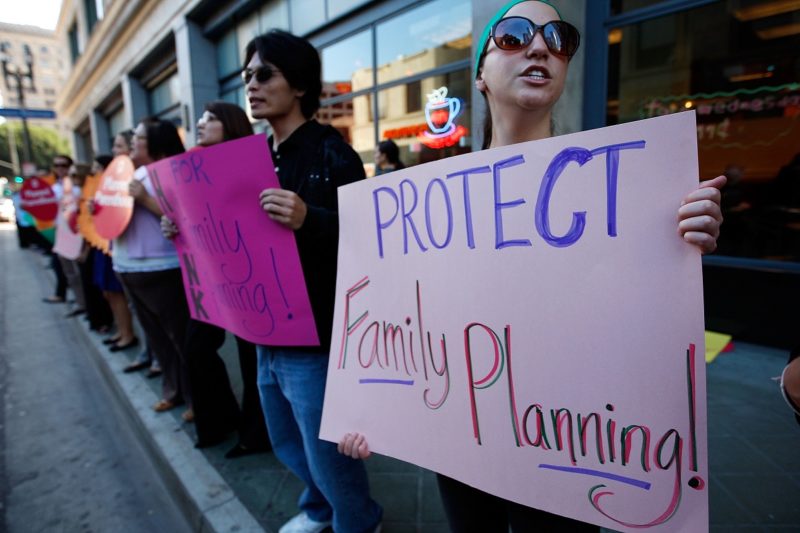California Mounts ‘Resistance’ to Protect Medicaid Patients’ Reproductive Health Care
Amy Moy, vice president of public affairs with Essential Access Health, said newly-signed legislation represents "California resistance in the Trump era."

As congressional Republicans try to oust Planned Parenthood from Medicaid, California’s Democratic-dominated legislature has moved to preserve access to family planning services for people with low incomes.
Gov. Jerry Brown (D) this month signed legislation to safeguard the right of California Medicaid enrollees to use their health coverage at any qualified provider, including Planned Parenthood.
The California law mimics a decades-old “free choice of provider” provision of Medicaid found in the federal Social Security Act. Advocates fear for the future of that provision under the Trump administration.
Amy Moy, vice president of public affairs with Essential Access Health, which co-sponsored the California measure, said the law represents “California resistance in the Trump era.”
“It’s how do we look at our protection strategy and hold the line here in California … and give other states models that they could potentially use,” Moy told Rewire. “It really is a state-level game right now.”
Congressional Republicans have long campaigned to push Planned Parenthood out of the federal Medicaid program, the government insurance program for low-income people. Such an action would stop millions of these individuals from using their insurance for health services, such as birth control and cancer screenings, at Planned Parenthood. Republicans have so far failed to deliver a “defunding” bill for the president’s signature.
Elizabeth Nash, senior state issues manager with the Guttmacher Institute, suggested the California law is a “model for other states.”
“California is one of a handful of states that is on the cutting edge on policies to protect reproductive health and often is the first to adopt a policy that other states look to implement,” she told Rewire.
In 2016, more than 2.3 million women of reproductive age were enrolled in Medi-Cal, as the state Medicaid program is known.
“It’s critically important for enrollees to have access to their provider of choice for time-sensitive family planning,” Moy said.
In April, Maryland became the first state to protect funding of Planned Parenthood, as the Associated Press reported. Its law promises to backfill federal cuts to Planned Parenthood with state money. Meanwhile, GOP officials in Arkansas ousted Planned Parenthood from its Medicaid program. The conservative U.S. Court of Appeals for the Eighth Circuit recently upheld that law.
Introduced by state Sens. Ed Hernandez (D-Azusa) and Connie Leyva (D-Chino), the California measure represents a notable win for Planned Parenthood Affiliates of California, a co-sponsor. Planned Parenthood officials warned this year of the potentially catastrophic consequences of Republican-backed funding cuts.
“If we do not get federal reimbursement for the care we provide, our health centers will close,” Beth Parker, chief legal counsel of Planned Parenthood Affiliates of California, told Rewire in February. “Our patients will have nowhere to go.”
Some 1.5 million patients visit Planned Parenthood’s 115 centers in the Golden State annually, according to its most recent fact sheet. Federal dollars account for nearly 80 percent of Planned Parenthood’s operating revenues in California, Parker said.
Planned Parenthood centers in other states are also vulnerable. In Oregon, New York, Wisconsin, Minnesota, and Washington state, federal reimbursements constitute a large share of Planned Parenthood revenues.
The California law builds on measures to protect reproductive health, such as a state law to lock in the Affordable Care Act’s contraceptive coverage requirement and a law to guarantee patients can access a year’s supply of birth control at a time, Moy noted.
